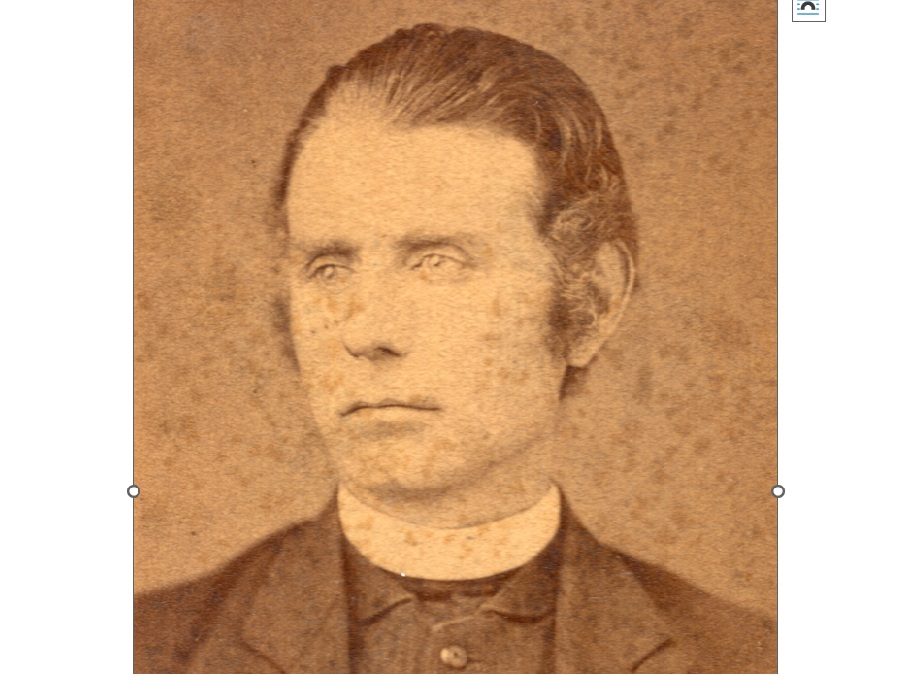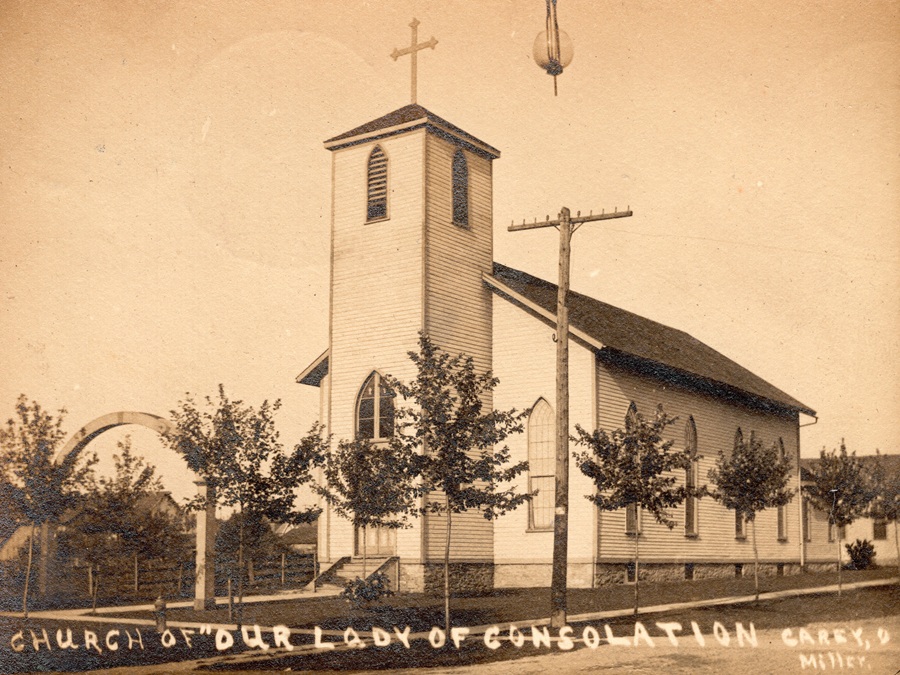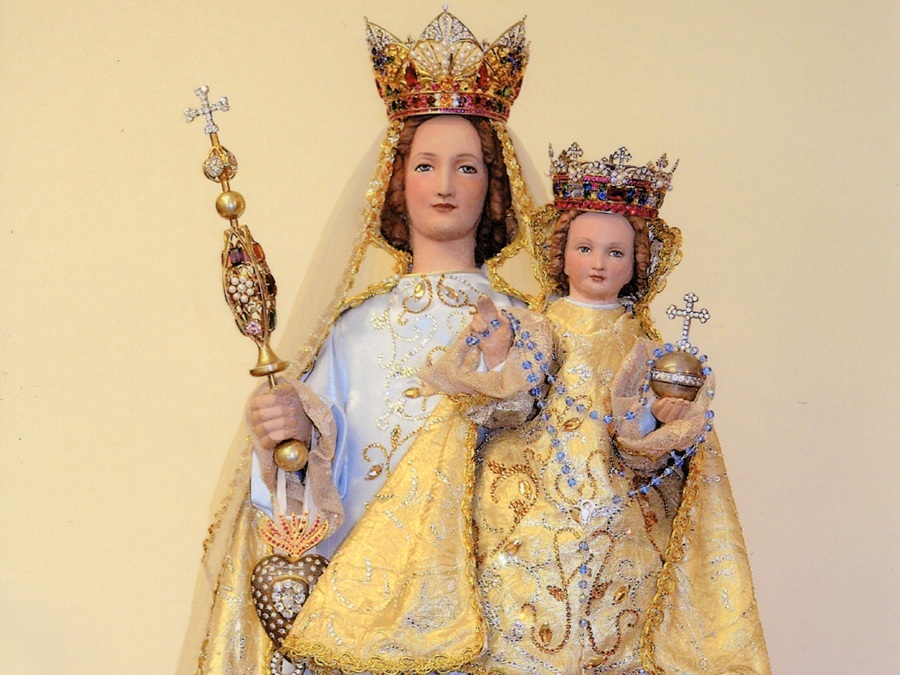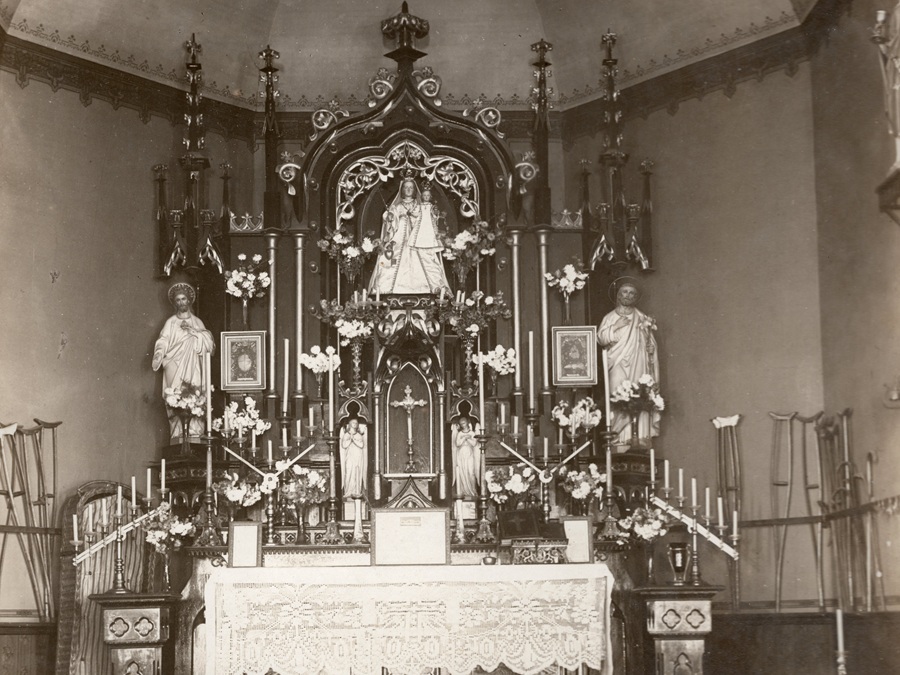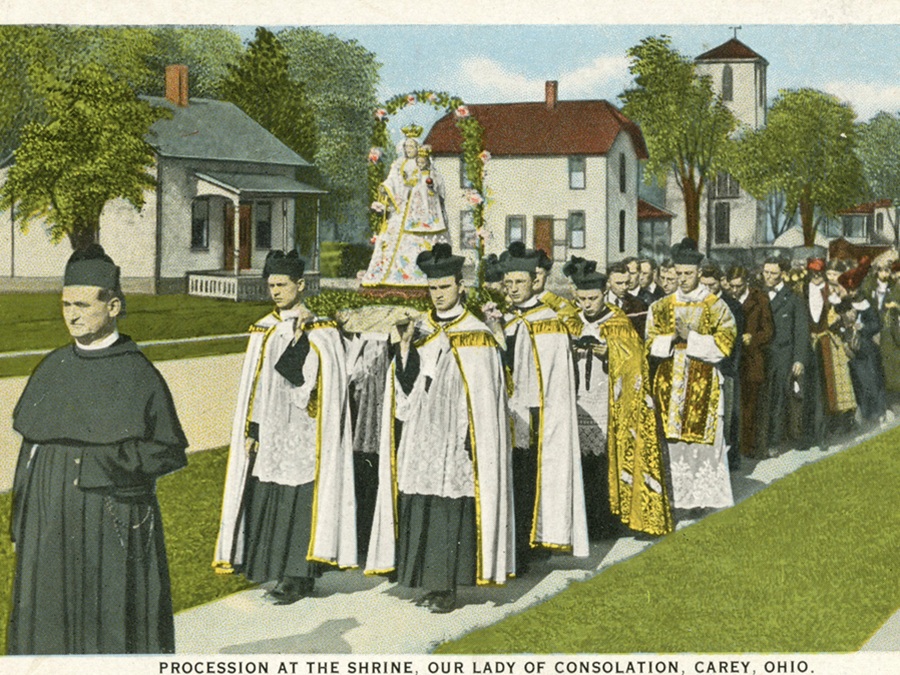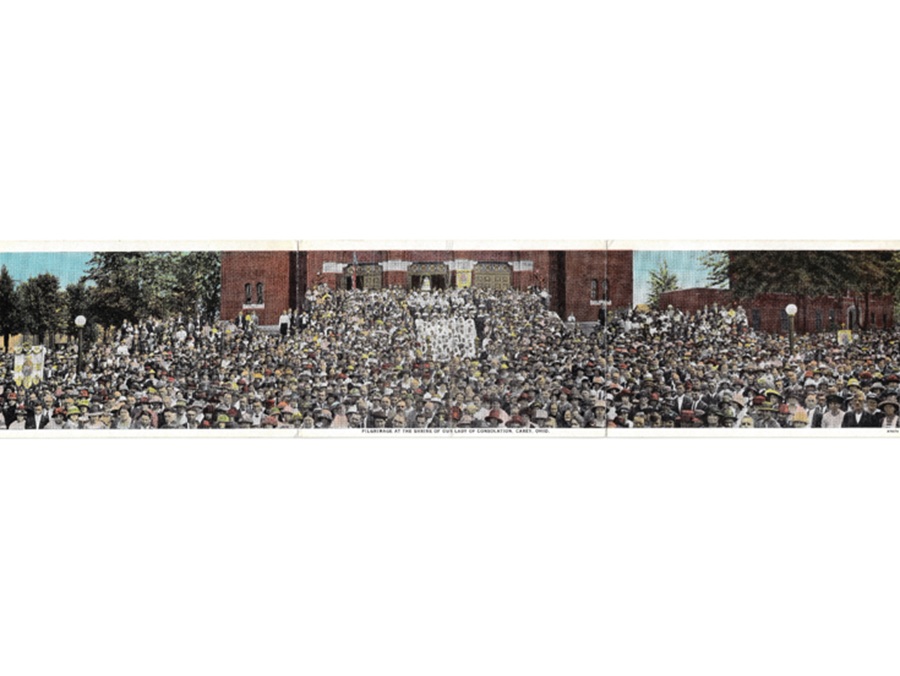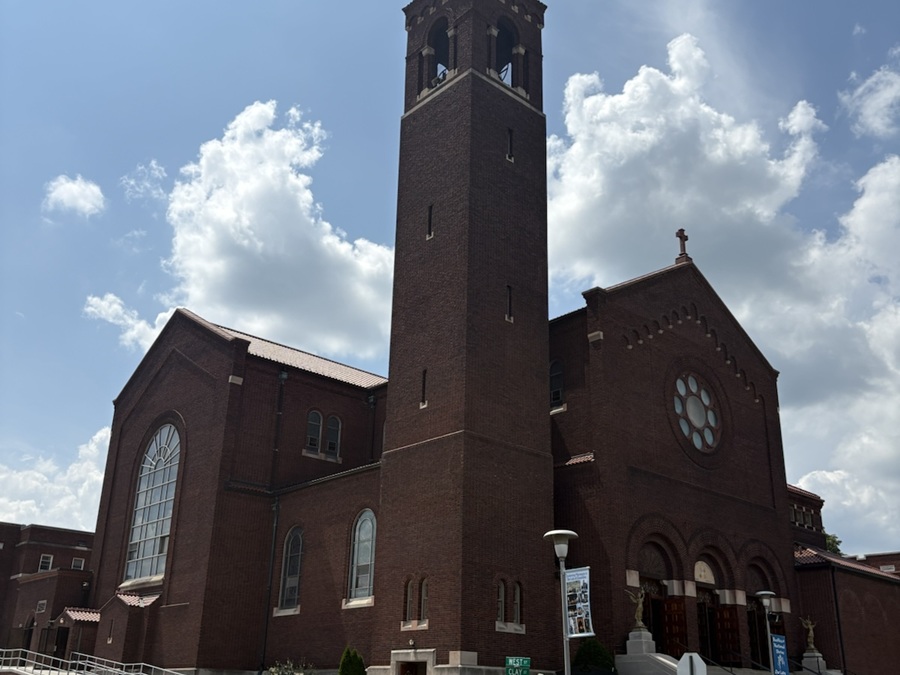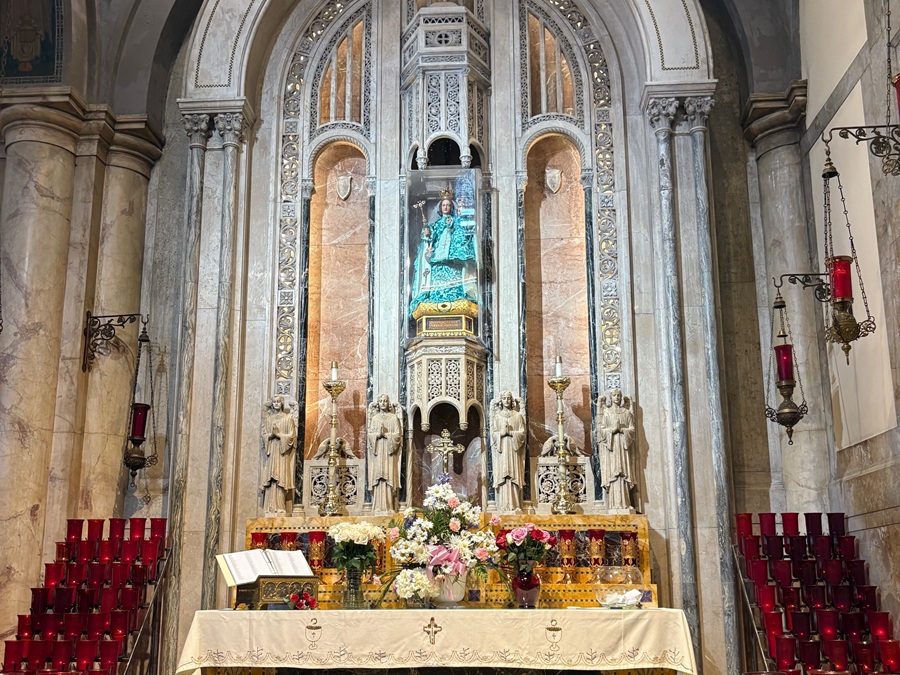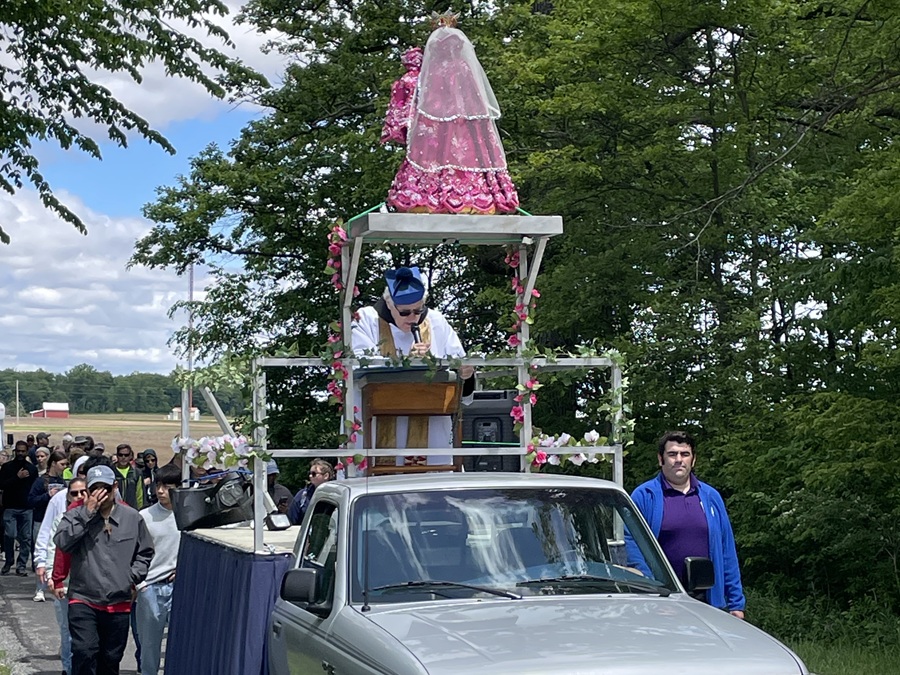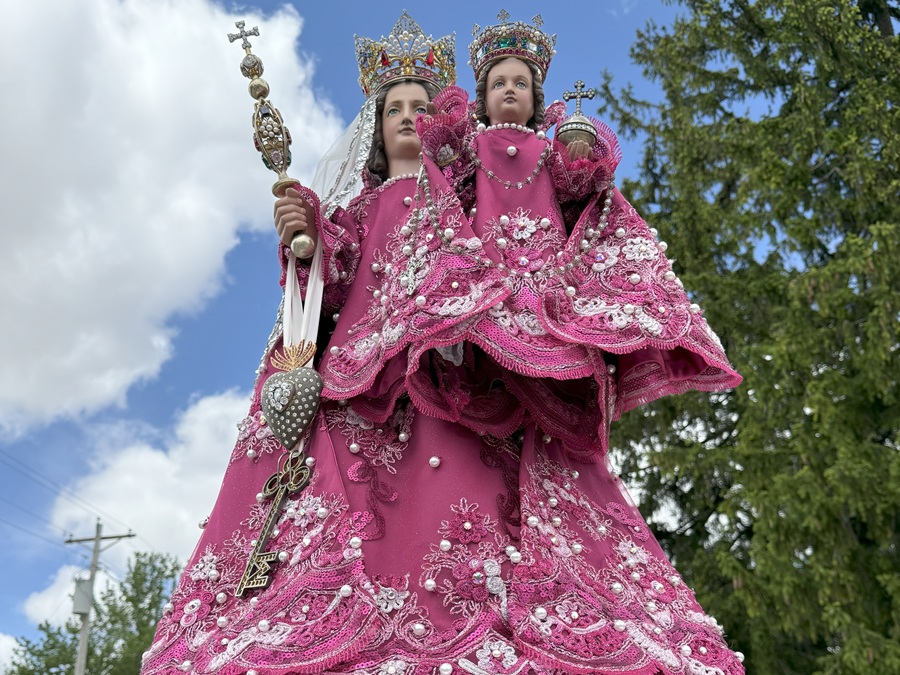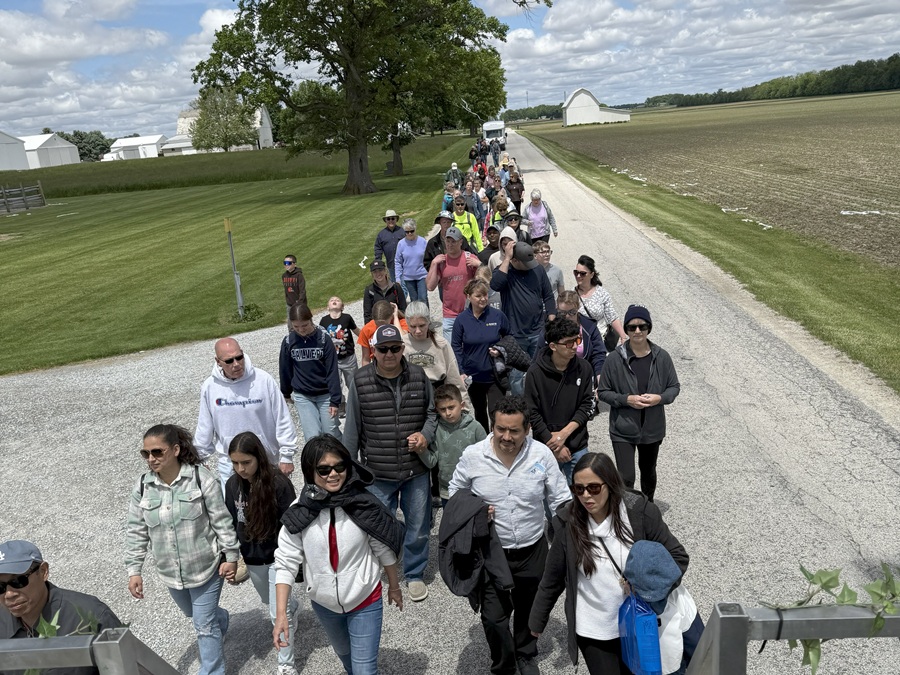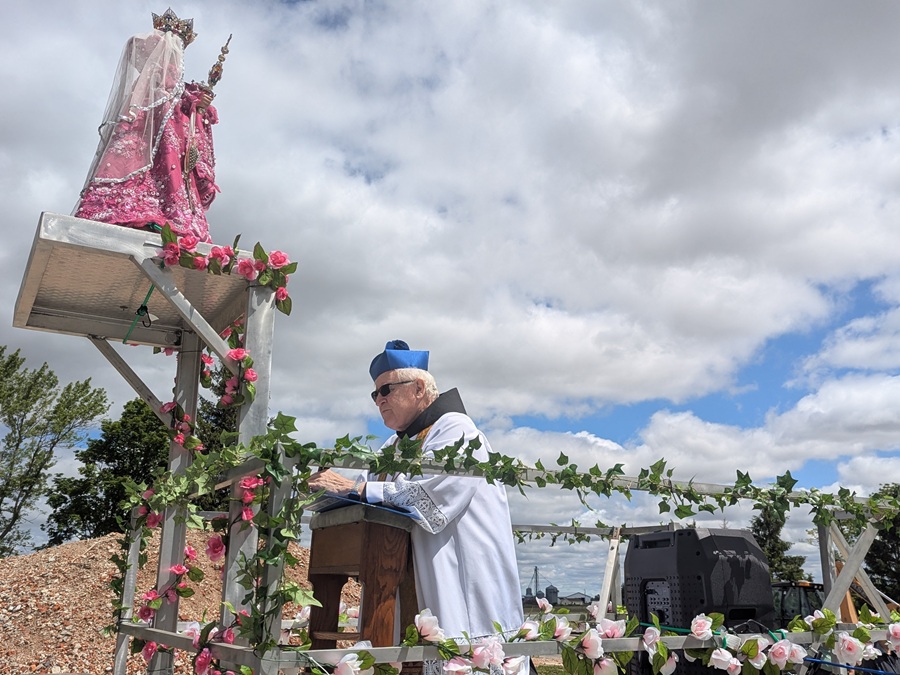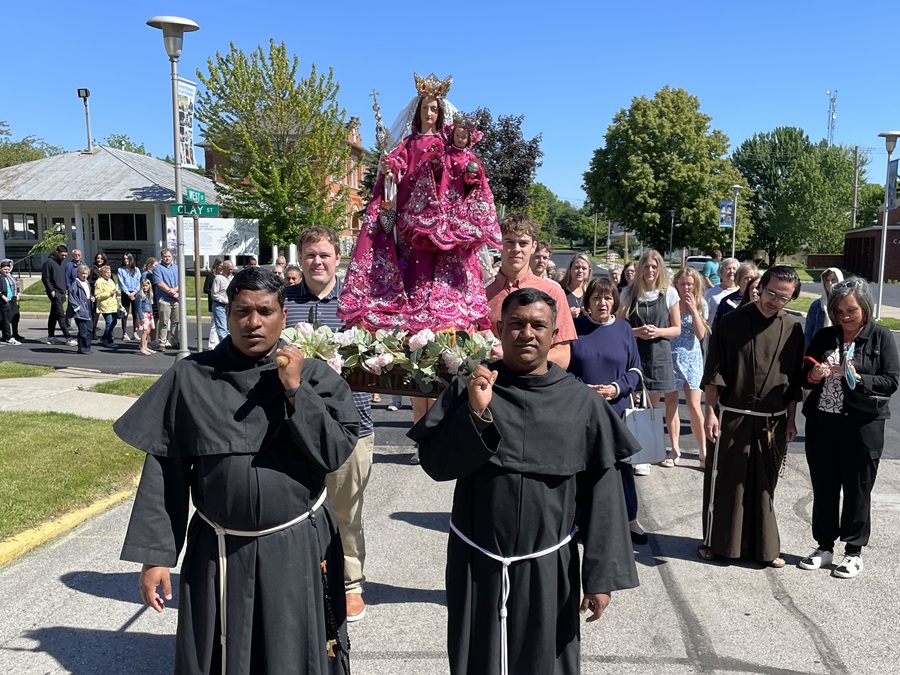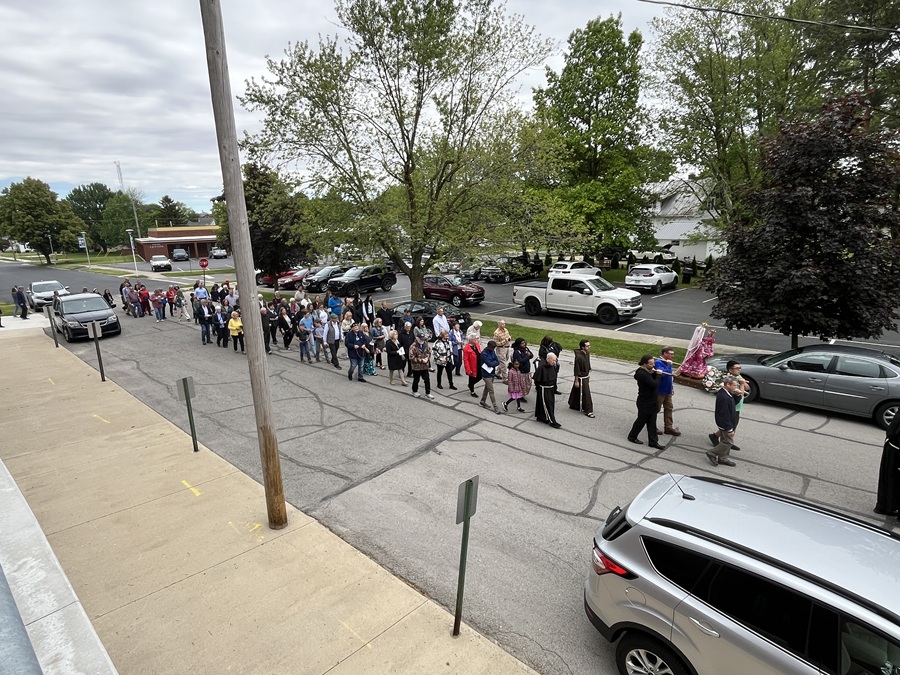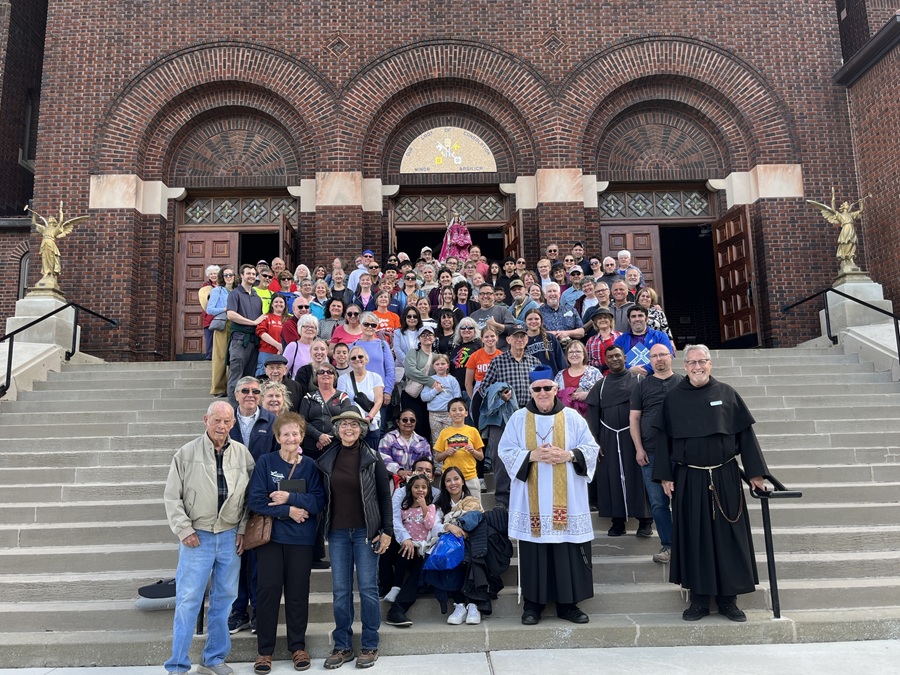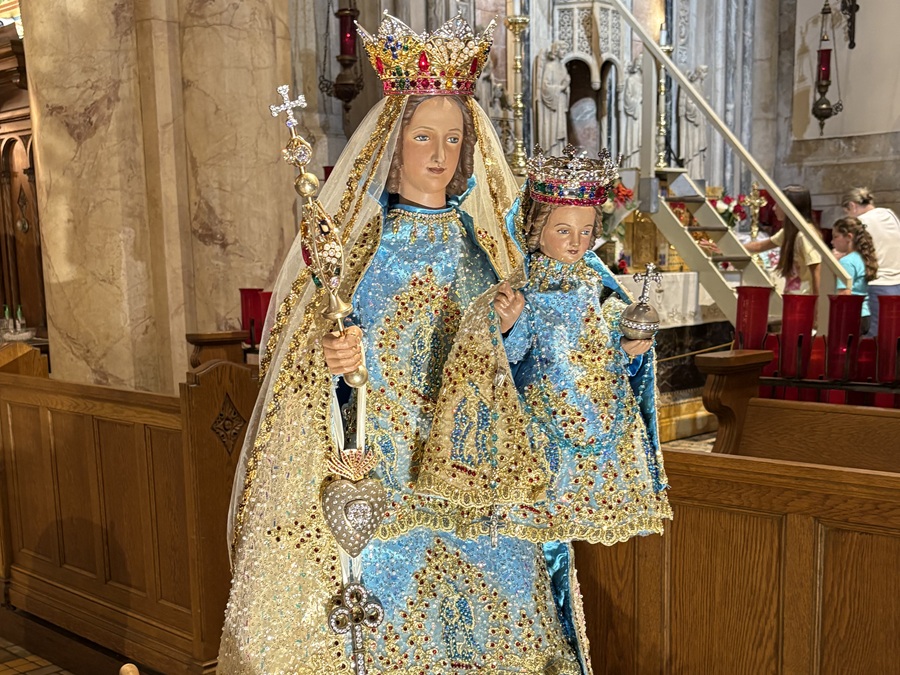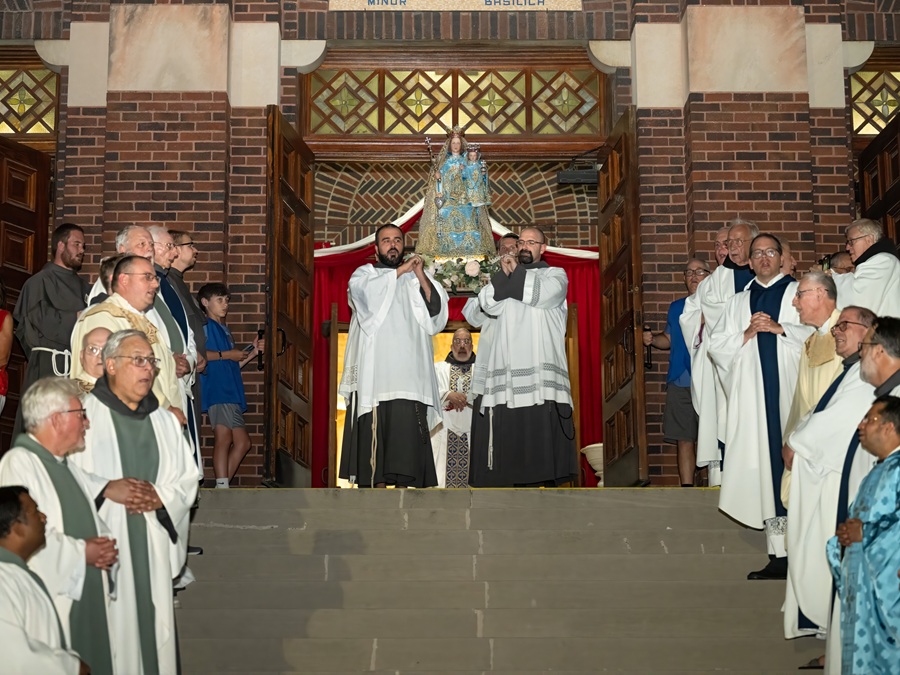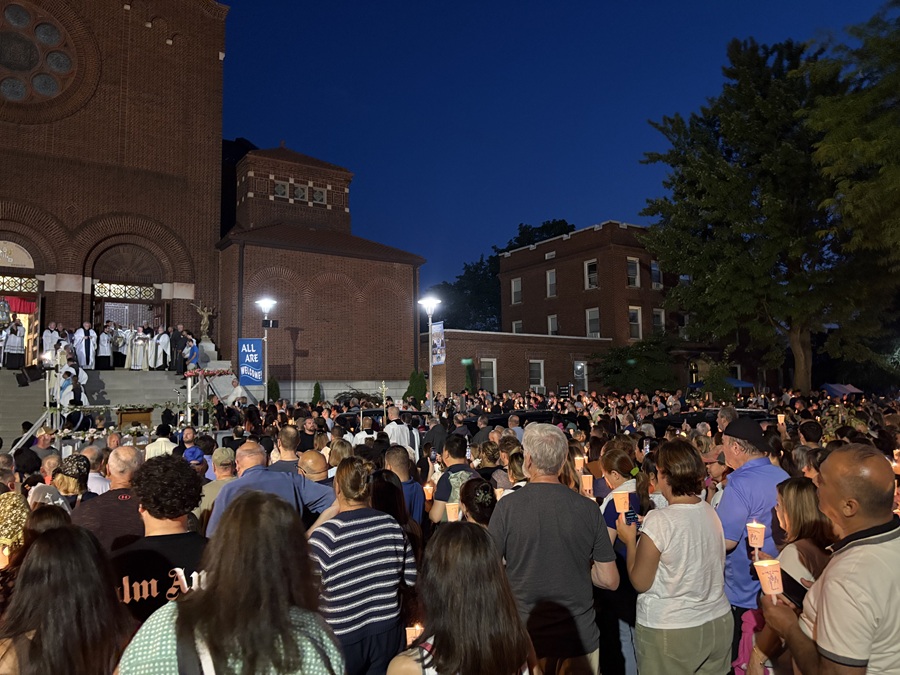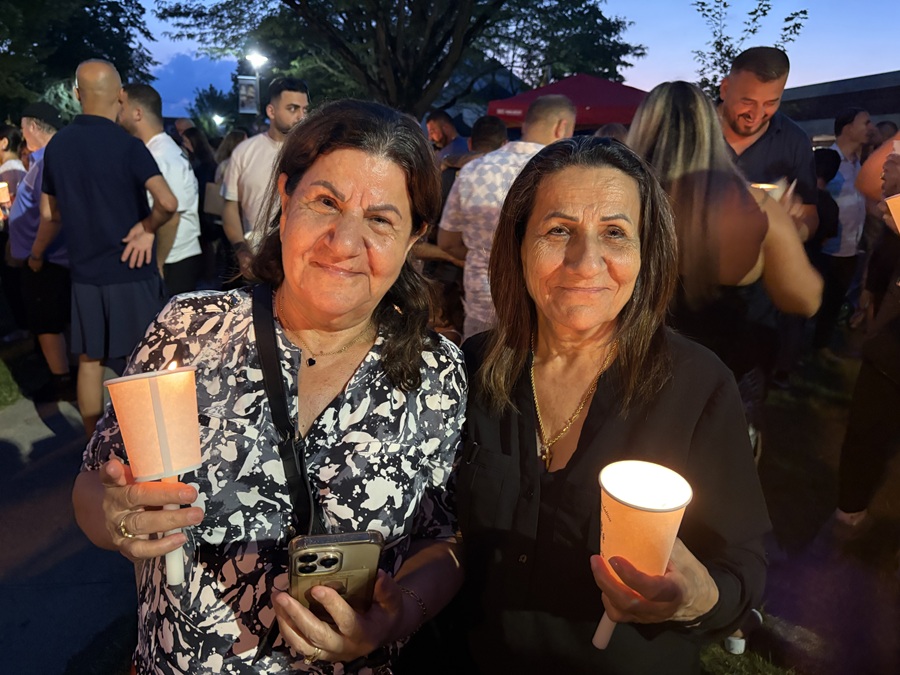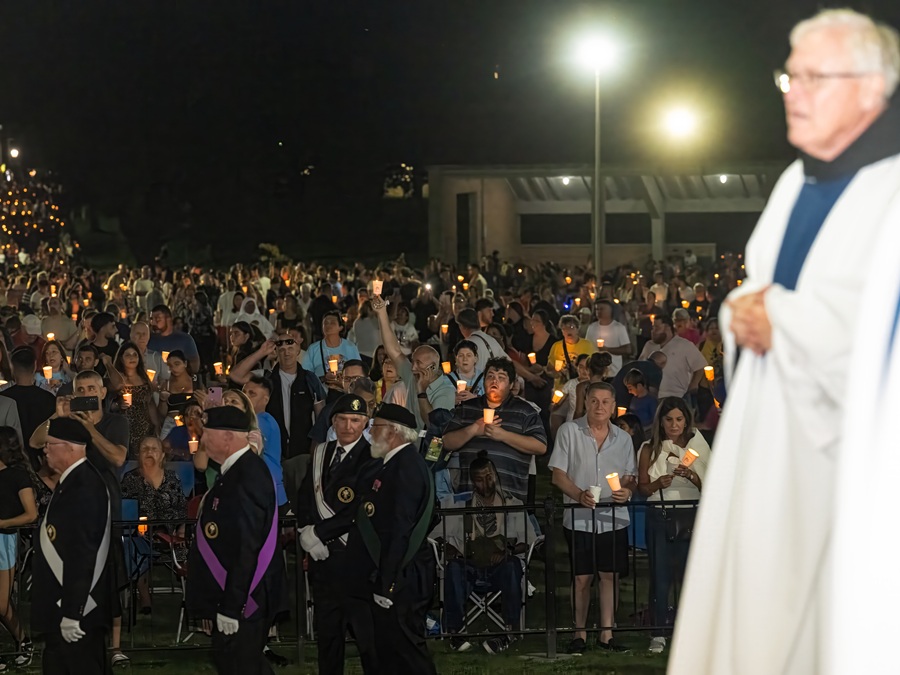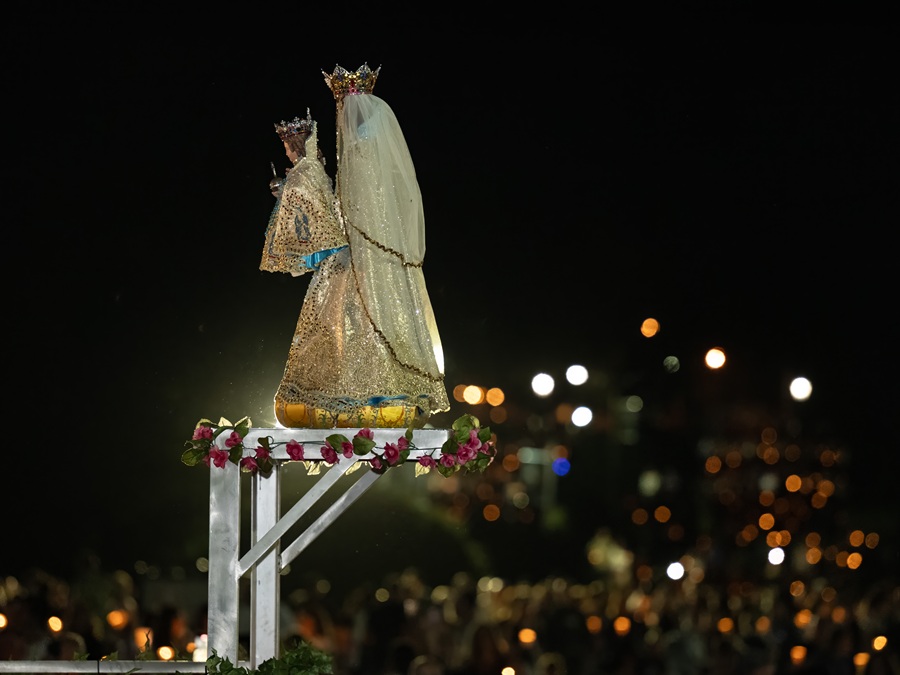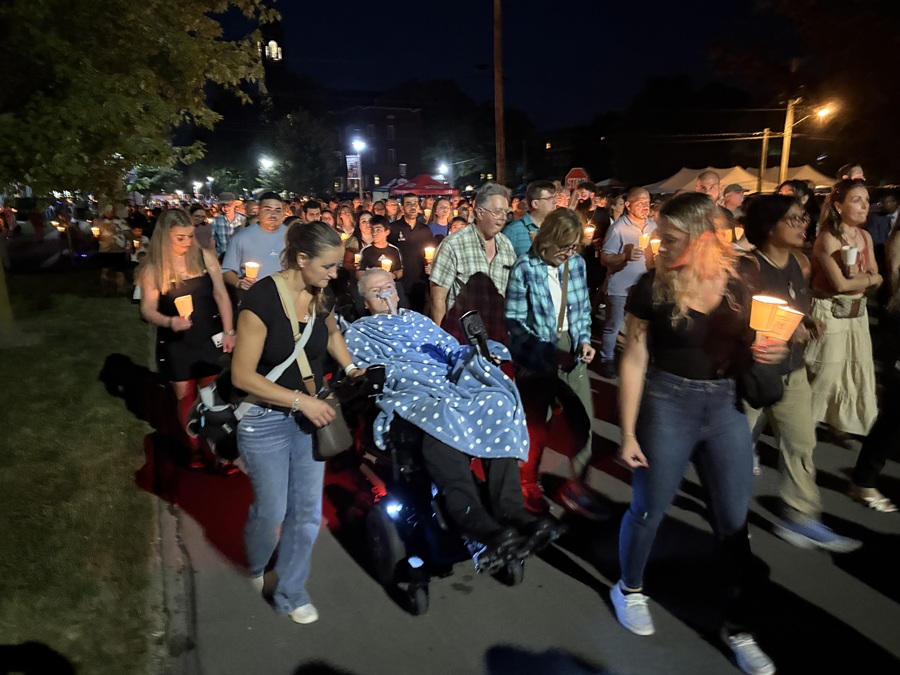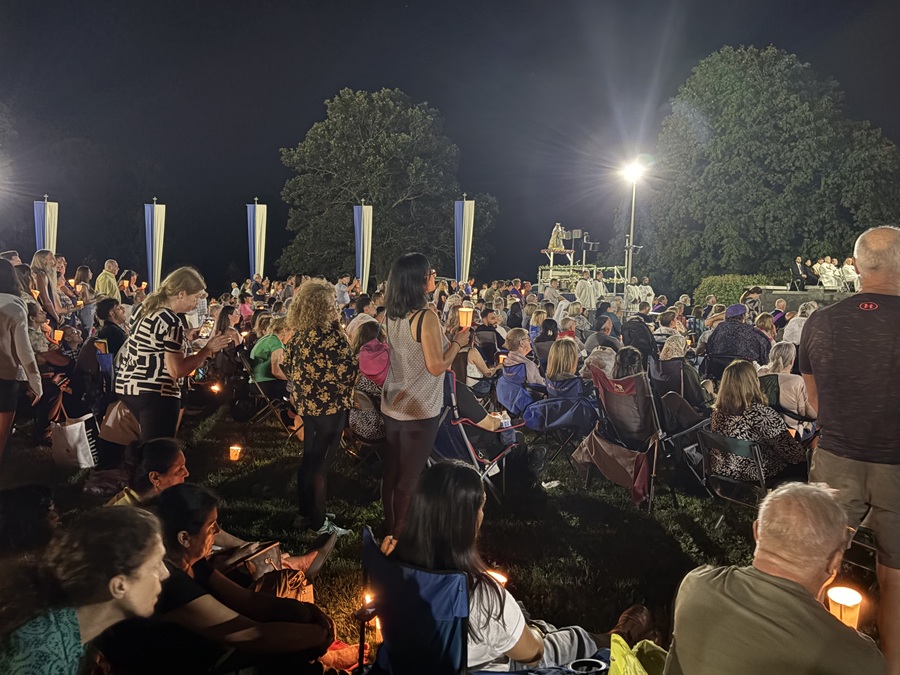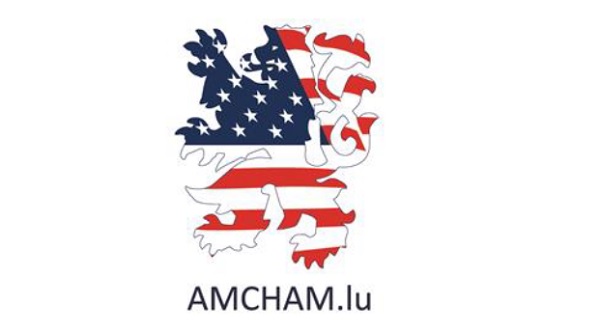 1875 at Closing of Assumption Novena celebrating 150th anniversary, on 14 August 2025;
Credit: Kevin Wester
1875 at Closing of Assumption Novena celebrating 150th anniversary, on 14 August 2025;
Credit: Kevin Wester
As the country of Luxembourg celebrates the 400th jubilee of devotion to Our Lady of Luxembourg in 2024-2025, American Luxembourgers are celebrating 150 years of devotion to Our Lady of Luxembourg in Carey, Ohio, this year: the 150th celebration in Carey culminated in its annual May feast day as well as in its Novena of the Assumption of Mary this past week.
Devotion to Our Lady of Luxembourg in the US originates with Luxembourg immigration beginning in the 1840s. The earliest known statue of Our Lady of Luxembourg was brought to America in 1849 by Anna Margaret Deppiesse, of Messancy, Province of Luxembourg, Belgium, and was placed in St. Nicholas Church in Dacada, Wisconsin, where it remains today; however, it was the Rev. Joseph Gloden, a Luxembourg immigrant priest, who took the devotion to new heights 150 years ago in 1875.
Rev Gloden, who was born in 1842 in Remerschen, Luxembourg, and began his studies for the priesthood in France, immigrated to the US in 1867 and was ordained a priest in 1869, in Cleveland, Ohio. In 1871, he became pastor of St. Nicholas Church in Frenchtown, Ohio, where he served Belgian, Belgian-Luxembourgish and German parishioners. In 1873, he was given the additional responsibility of pastoring a floundering mission parish in the primarily Protestant town of Carey, Ohio, seven miles south of Frenchtown. The first pastor had attempted to build a small church but, due to his unpopularity among parishioners, his efforts failed. Gloden was embraced by the new parish, and through his leadership, construction began on a small frame church.
The church was initially to be named St. Edward’s, but Rev Gloden encouraged parishioners to name the parish Our Lady of Consolation (Our Lady of Luxembourg). Rev Gloden had previously made a commitment before his ordination that, should he establish a parish, he would name it after Our Lady of Luxembourg. Rev Gloden also had a vision that this new parish in Carey would be a pilgrimage shrine to Our Lady of Luxembourg reminiscent of the cathedral in Luxembourg City, Luxembourg. He realised that Luxembourg immigrants to America were homesick for the annual Oktav celebration and that it was impossible for most to travel back to Luxembourg. The new parish in Carey would serve as a national shrine to Our Lady of Luxembourg and the Oktav could continue to be celebrated annually.
In 1875, Rev Gloden commissioned a statue of Our Lady of Luxembourg be fabricated in Luxembourg. Luxembourg Bishop Nicolas Adames greatly supported Rev Gloden’s efforts to establish an American shrine to Our Lady and ordered that a small piece of wood be cut from the back of the original 1624 statue in the cathedral. That piece of wood was set in a small reliquary necklace to be worn by the new statue, indicating that prayers made before the statue in Carey were also presented before the original image in Luxembourg. The statue was brought from Luxembourg to Frenchtown, Ohio, by three of Rev Gloden’s parishioners: Nicolas Warnament and Frank and Mary Josephine Collet.
On 25 May 1875, at the same time as the closing procession of the Oktav was being celebrated in Luxembourg City, more than a thousand people from the Frenchtown and Carey region joined in a procession of the statue for seven miles from Frenchtown to the new church in Carey. Historical records indicate that while heavy rainfall occurred on both sides of the procession, neither the statue nor the participants were affected. This became the first of countless miracles attributed to the statue of Our Lady of Consolation.
The new parish in Carey was poor and lacked an adequate altar for the beautiful statue. Nicholas Gonner, the most prominent 19th century Luxembourg immigrant to America and the owner/editor of the Luxemburger Gazette in Dubuque, Iowa, rallied Luxembourg immigrants from throughout the US to donate funds to improve the shrine church. His efforts proved successful and a new altar for the statue, named the Luxembourg altar, along with other amenities were added to the church.
The shrine in Carey holds the distinction of being the first Marian shrine in the US. Pilgrims from throughout the Midwest began to come to the shrine and thousands of healings and spiritual favours have been recorded since it opened in 1875. In 1912, the Conventual Franciscan friars took over guardianship of the shrine and the current basilica church took shape from 1904-1929 to accommodate the tens of thousands of pilgrims who come annually to Carey. In 1957, the US Conference of Catholic Bishops approved the title of national shrine for the church in Carey and, in 1971, the shrine church was designated as a minor basilica. Today, it bears the name Basilica & National Shrine of Our Lady of Consolation.
On Saturday 24 May, the original seven-mile procession from Frenchtown to Carey was re-enacted. The Franciscan friars of Carey and more than 100 pilgrims of various ethnic backgrounds accompanied the statue along the same route used in 1875. A few of the participants were descendants of those who had been a part of the original procession. In stark contrast to the stormy weather back in 1875, the day was sunny and clear. Some participants walked the entire way but two small buses were available for those unable to walk. The procession was accompanied by music, prayers and recitation of the rosary. The garment the statue wore was specially made for the occasion by Wesson Georges, a Chaldean pilgrim from Michigan.
About halfway to Carey, at the border of Seneca and Wyandot counties, the group stopped for lunch at the Brodman farm. Most participants had brought along their lunch and refreshments were served. After lunch, as the procession approached the basilica in Carey, the church bells rang to welcome the historic statue to its home of 150 years. Devotions were celebrated in the church and pilgrims were blessed with a relic of the true cross.
During the anniversary weekend, Franciscan Friar Tommy Piolara gave special evening reflections. On Sunday 25 May, regular Masses were celebrated with afternoon shrine devotions and a rosary procession. On Monday 26 May, the Solemnity of Our Lady of Consolation was celebrated with morning Mass, followed by shrine devotions and a rosary procession.
The 150th anniversary celebration culminated in the Novena of the Assumption of Mary during 6-14 August. The national shrine’s largest annual celebration draws thousands from numerous ethnic backgrounds with the largest group being Chaldean Catholics. Chaldeans, who come from Iran and were persecuted and expelled under Sadam Hussein, have a large population in the Detroit, Michigan, area.
Bishop John Stowe of Lexington, Kentucky, preached at the nine-day celebration. Bishop Stowe, a Conventual Franciscan friar, is a former pastor of the basilica and guardian of the national shrine. During his evening reflections, he offered a spiritual message and also delved into the historic roots of the statue, the devotion’s origin in Luxembourg, and the evolution of the devotion in the US through the efforts of Rev Gloden and the Franciscan friars who succeeded him.
On 14 August, the eve of the Assumption of Mary, the novena celebration culminated in a closing procession of the 150-year-old statue of Our Lady of Luxembourg. Thousands of pilgrims packed the shrine grounds and at 21:00, the statue was brought to the front doors of the basilica and presented to the gathering. Bishop Daniel Thomas, of Toledo, led the rosary during the candlelit procession of the statue from the basilica to Shrine Park about four blocks away. The crowd followed, praying the rosary in various languages.
An outdoor Mass was then celebrated in the Shrine Park and marked the closing of the 150th anniversary of the statue and devotion to Our Lady of Luxembourg that found its way from Luxembourg to the US.

